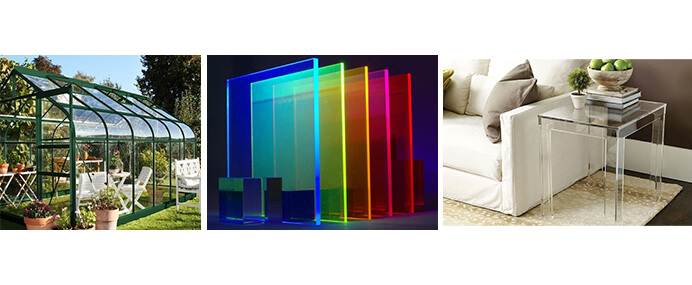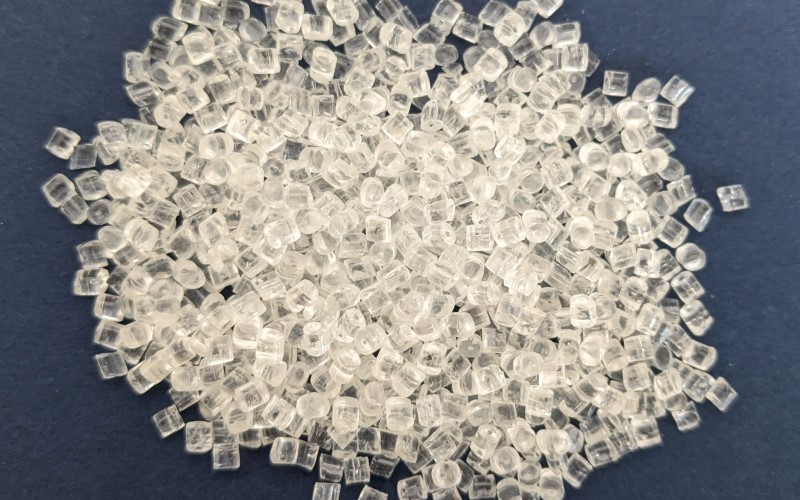PMMA (Acrylic)
Description
Polymethyl methacrylate (PMMA), also known as acrylic or acrylic glass, is a transparent and rigid thermoplastic. Because of its properties, like transparency, easy maintenance, low cost, lightweight and shatter-resistance, it is often used as a substitute for glass and is preferred for many applications.
Features
- High Transmittance:Highest luminous transmittance of all the transparent plastics. PMMA allows 92% of light to pass through it.
- Surface Hardness:Its surface hardness is close to aluminum, and it is the highest in all transparent plastics. It has excellent scratch resistance comparing to other transparent polymers.
- Good Weather Resistance:Excellent weather resistance with little change in transparency and color in the tropical climate for many years.
- Excellent Chemical Resistance:Unaffected by dilute inorganic acids, alkaline, non-polar, aliphatic hydrocarbons, and greases, etc.
- Excellent Hydrolysis Resistance
Applications
window and door profiles, domed skylights, facade design, LED lights, furniture, swimming pool enclosures, panels, canopies, green houses, luminous ceilings, shatterproof windows, windshields, drug testing devices, storage cabinets, illuminated signs…

Technical Data
| Item | Property | Test Method | Unit | Value |
|---|---|---|---|---|
| Physical | Density | ASTM D792 | g/cm3 | 1.18 |
| Water Absorption | ASTM D570 | % | 0.3 | |
| Rockwell Hardness | ASTM D785 | R scale | 69 | |
| Mechanical | Tensile Modulus | ASTM D638 | psi | 3.5 – 5.0 × 105 |
| Tensile Strength | ASTM D638 | psi | 8,000 - 11,000 | |
| Flexural Modulus | ASTM D790 | psi | 3.5 – 5.0 × 105 | |
| Flexural Strength | ASTM D790 | psi | 12,000 – 17,000 | |
| Izod Impact | ASTM D256 | ft-lb/in | 0.3 | |
| Thermal | Heat Deflection Temperature at 264 psi | ASTM D648 | °C/°F | 65 - 100 / 150 - 210 |
| Coefficient of Linear Thermal Expansion | ASTM D696 | in./in./°F | 5 - 9 × 105 | |
| Flammability | UL 94 | - | HB | |
| Electrical | Dielectric Constant | ASTM D150 | 60 Hz | 4.0 |
| Dissipation Factor | ASTM D150 | 60 Hz | 0.05 | |
| Dielectric Strength | ASTM D149 | V/mm | 400 | |

